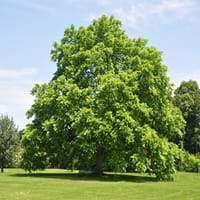Life Span
Perennial
Biennial
Type
Bulb or Corm or Tuber
Tree
Origin
South America
North America, United States, Northeastern United States, Mid-Atlantic United States, North-Central United States, Central United States, Canada
Types
Pamianthe cardenasii , Pamianthe parviflora , Pamianthe peruviana
Not Available
Number of Varieties
Not Available
Habitat
All sorts of environments
Anthropogenic, Floodplains, Forests
USDA Hardiness Zone
8-10
3-9
Sunset Zone
21,22
1a, 1b, 2a, 2b, 3a, 3b, 4, 5, 6, 7, 8, 9, 14, 15, 16, 17
Habit
Clump-Forming
Oval or Rounded
Flower Color
White
Yellow green
Flower Color Modifier
Bicolor
Bicolor
Fruit Color
Green
Green, Brown
Leaf Color in Spring
Dark Green
Light Green
Leaf Color in Summer
Light Green
Green, Dark Green
Leaf Color in Fall
Several shades of Green
Yellow, Gold
Leaf Color in Winter
Light Green
Not Available
Leaf Shape
Strap shaped
Pinnate
Plant Season
Spring, Summer, Fall
Spring, Summer, Fall
Sunlight
Partial Sun, Partial shade
Full Sun
Type of Soil
Loam, Sand
Clay, Loam
The pH of Soil
Acidic, Neutral, Alkaline
Acidic, Neutral, Alkaline
Soil Drainage
Average
Well drained
Bloom Time
Spring, Late Spring, Early Summer, Summer, Late Summer
Late Spring, Early Summer
Tolerances
Drought
Not Available
Where to Plant?
Ground, Pot
Ground
How to Plant?
Offsets
Seedlings
Plant Maintenance
Medium
Medium
Watering Requirements
Keep the ground moist but not water-logged
Average Water Needs, Do Not over Water, Requires regular watering
In Summer
Lots of watering
Lots of watering
In Spring
Moderate
Moderate
In Winter
Average Water
Average Water
Soil pH
Acidic, Neutral, Alkaline
Acidic, Neutral, Alkaline
Soil Type
Loam, Sand
Clay, Loam
Soil Drainage Capacity
Average
Well drained
Sun Exposure
Partial Sun, Partial shade
Full Sun
Pruning
Pinch or prune as they grow to promote branching and bushiness, Remove damaged leaves, Remove dead branches, Remove dead leaves, Requires little pruning
Remove damaged leaves, Remove dead branches, Remove dead leaves
Fertilizers
All-Purpose Liquid Fertilizer, High phosphorus
All-Purpose Liquid Fertilizer
Pests and Diseases
Leaf spot, Mosaic viruses
Red blotch
Plant Tolerance
Drought
Not Available
Flowers
Showy
Insignificant
Flower Petal Number
Single
Not Available
Fragrant Leaf
No
Not Available
Fragrant Bark/Stem
No
Not Available
Foliage Texture
Coarse
Coarse
Foliage Sheen
Glossy
Matte
Attracts
Bees, Birds, Bumblebees, Butterflies, Hummingbirds, pollinators
Birds, Squirrels
Allergy
Unknown
Gastric, Pollen
Aesthetic Uses
Beautification, Bouquets, Ornamental use, Showy Purposes
Not Used For Aesthetic Purpose
Beauty Benefits
No Beauty Benefits
Good for skin
Environmental Uses
Air purification
Air purification, Shadow Tree
Medicinal Uses
No Medicinal Use
Dysentry, Intestinal irritations, Small pox, Stomach pain
Part of Plant Used
Not Available
Sap, Seeds
Other Uses
Beneficial species for attracting pollinators, Decoration Purposes
Application in Furniture, Decorative veneers, flooring, paneling, Herbicide
Used As Indoor Plant
No
No
Used As Outdoor Plant
Yes
Yes
Garden Design
Bog Garden, Container, Feature Plant, Foundation, Mixed Border, Water Gardens
Edible, Shade Trees
Botanical Name
HYMENOCALLIS longipetala
JUGLANS cinerea
Common Name
Peruvian Daffodil, Spiderlily
Butternut
In Hindi
peruvian daffodil
Butternut Tree
In German
peruvian daffodil
Butternut Baum
In French
peruvian daffodil
noyer cendré
In Spanish
Pamianthe
árbol de nogal
In Greek
peruvian daffodil
Butternut Δέντρο
In Portuguese
peruvian daffodil
Árvore Butternut
In Polish
peruvian daffodil
butternut Drzewo
In Latin
peruvian daffodil
Butternut ligno
Phylum
Magnoliophyta
Magnoliophyta
Class
Liliopsida
Magnoliopsida
Order
Asparagales
Juglandales
Family
Amaryllidaceae
Juglandaceae
Clade
Angiosperms, Monocots
Angiosperms, Eudicots, Rosids
Tribe
Clinantheae
Not Available
Subfamily
Amaryllidoideae
Not Available
Number of Species
Not Available
Not Available
Season and Care of Peruvian Daffodil and Butternut Tree
Season and care of Peruvian Daffodil and Butternut Tree is important to know. While considering everything about Peruvian Daffodil and Butternut Tree Care, growing season is an essential factor. Peruvian Daffodil season is Spring, Summer and Fall and Butternut Tree season is Spring, Summer and Fall. The type of soil for Peruvian Daffodil is Loam, Sand and for Butternut Tree is Clay, Loam while the PH of soil for Peruvian Daffodil is Acidic, Neutral, Alkaline and for Butternut Tree is Acidic, Neutral, Alkaline.
Peruvian Daffodil and Butternut Tree Physical Information
Peruvian Daffodil and Butternut Tree physical information is very important for comparison. Peruvian Daffodil height is 61.00 cm and width 61.00 cm whereas Butternut Tree height is 1,220.00 cm and width 1,220.00 cm. The color specification of Peruvian Daffodil and Butternut Tree are as follows:
Peruvian Daffodil flower color: White
Peruvian Daffodil leaf color: Dark Green
Butternut Tree flower color: Yellow green
- Butternut Tree leaf color: Light Green
Care of Peruvian Daffodil and Butternut Tree
Care of Peruvian Daffodil and Butternut Tree include pruning, fertilizers, watering etc. Peruvian Daffodil pruning is done Pinch or prune as they grow to promote branching and bushiness, Remove damaged leaves, Remove dead branches, Remove dead leaves and Requires little pruning and Butternut Tree pruning is done Remove damaged leaves, Remove dead branches and Remove dead leaves. In summer Peruvian Daffodil needs Lots of watering and in winter, it needs Average Water. Whereas, in summer Butternut Tree needs Lots of watering and in winter, it needs Average Water.





